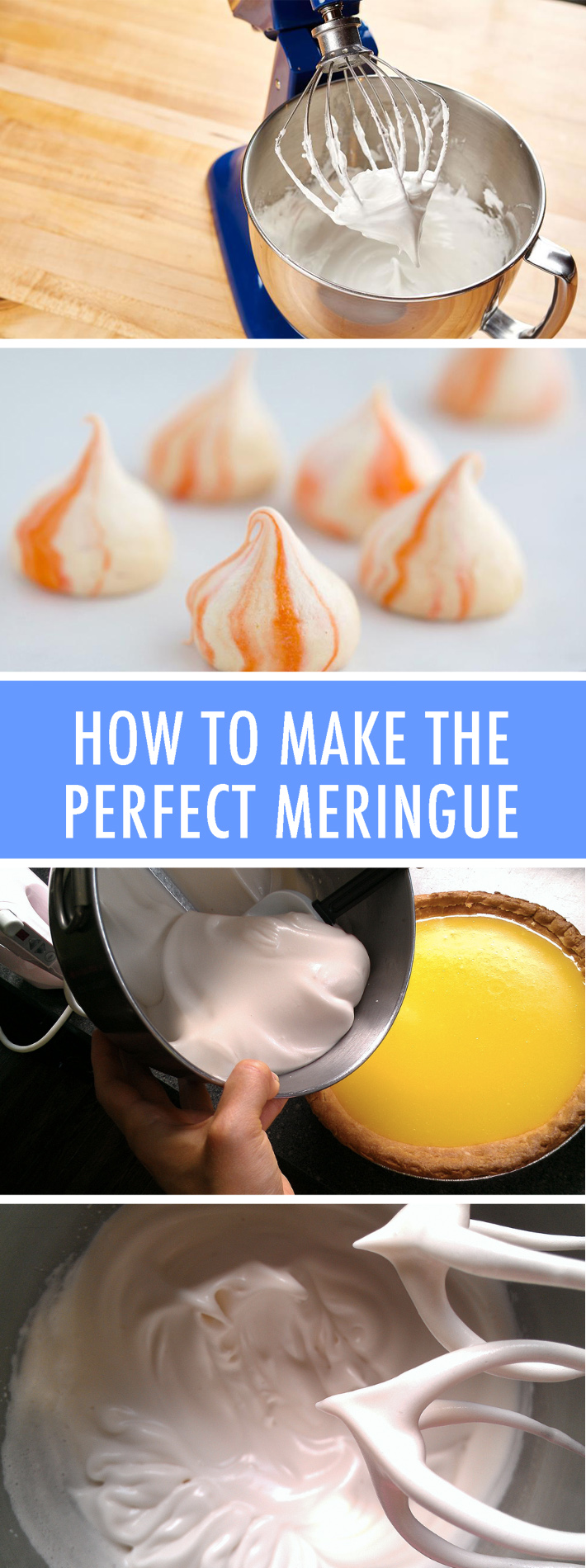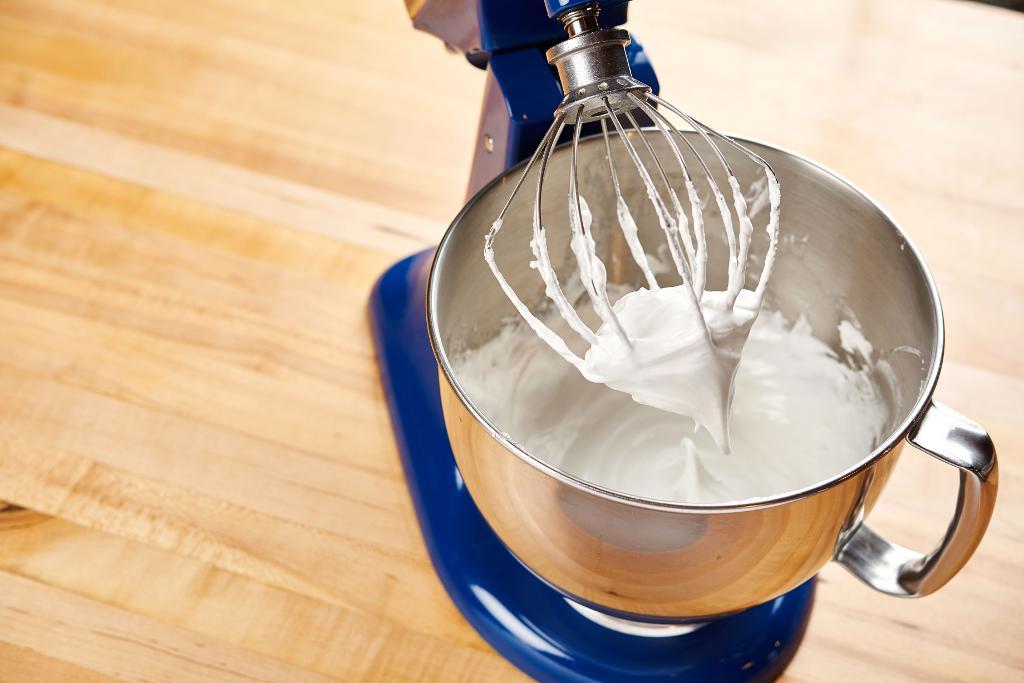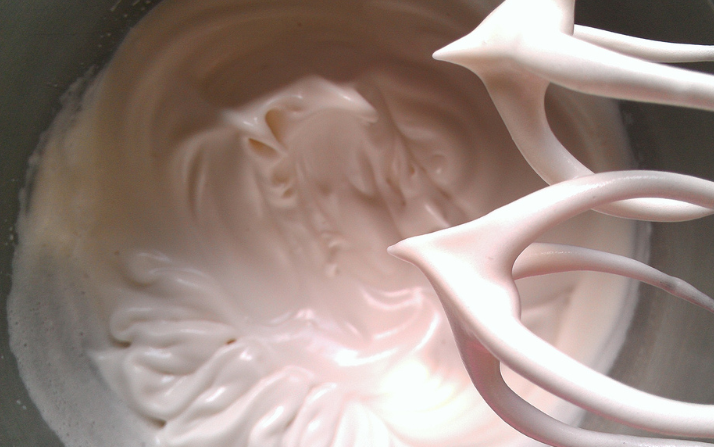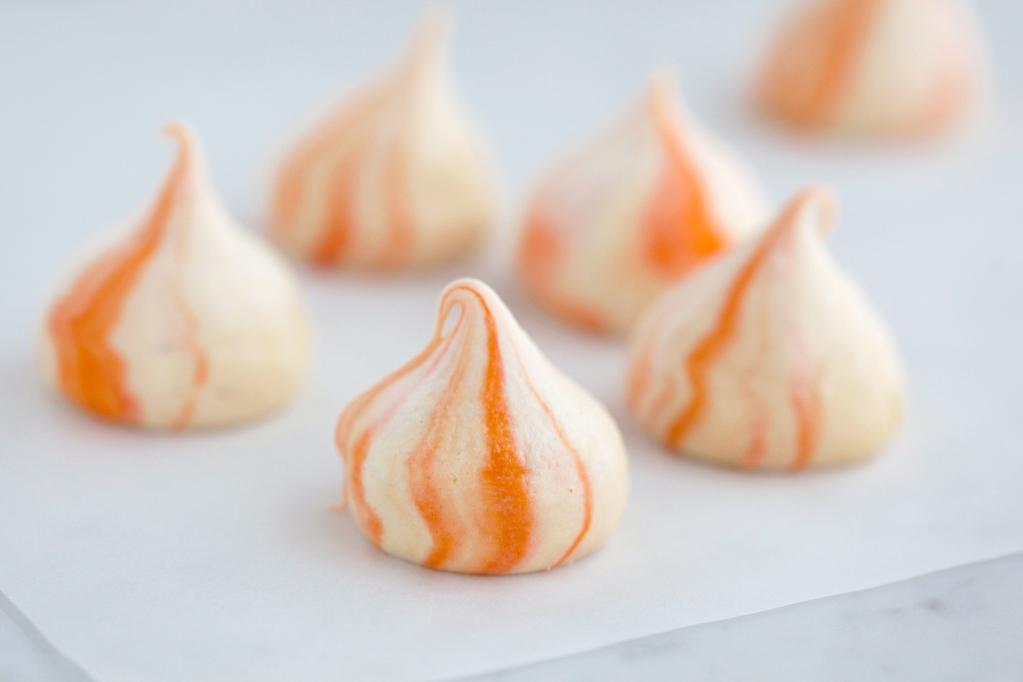As fancy as they might look, meringues are really quite simple to make and have so much to add to baking and cake decorating projects. The art of how to make the perfect meringue is less a matter of mastering a difficult recipe and more about attention to detail, subtle refinements in technique and using the best ingredients and equipment possible. It’s these tips and tricks that might seem fussy at first, but can have a big impact on the quality of your finished confections.

Making meringues: the basics
p>At first glance, making meringue seems almost too easy. The basic process goes like so: whip egg whites and sugar until the mixture forms firm peaks; pipe on to a baking sheet or spoon on a pie and bake.However, to guarantee that your meringues attain the ideal height, texture and consistency every time, it’s worth taking a look at all of the tools, ingredients and techniques that go into making the mixture. Here, we’ll take a look at all of these things.
Ingredients
Let’s explore the key ingredients in meringues, including the proper way to prep and incorporate them in the recipe.

Eggs
The age of your eggs matters when making meringues! Older eggs will have thinner whites, which are easier to whip and will impart more volume to your meringues. However, this is not to say that they are better — it’s just different. Fresher eggs will yield more stable meringues.
You’ll only need the egg whites for meringues, so first, you’ll need to separate the egg whites from the yolks. Eggs will separate more easily when chilled, so separate the eggs as soon as you take them out of the fridge. You can store the egg yolks for a separate use.
If you try to separate an egg and you get just the finest bit of yolk in the mix, it’s no good for making meringues. If you’re nervous, break each egg into a separate bowl before adding to the others, so that you won’t ruin a whole batch by incorrectly cracking one egg.
Once separated, allow the egg whites to come to room temperature before whipping into meringues. They will whip faster and better at room temperature.
Sugar
A typical meringue recipe calls for roughly 1/4 cup sugar per egg white. Some meringue recipes will call for regular granulated sugar. Others will call for superfine sugar, which is characterized by finer granules than granulated sugar, but not quite as fine as powdered sugar. Superfine sugar will dissolve more easily and keep your meringues from taking on a gritty texture.
Often, sugar is added to the egg white mixture after it attains soft peaks. The reason is that it will take longer for egg whites to whip and increase in volume if sugar is added from the beginning. By adding it later on, you can get the sweetness but also the height.
Stabilizer
Many meringue recipes call for a stabilizer such as cream of tartar to stabilize the meringue and make it less susceptible to deflating. If you use a copper bowl to make your meringue, it is not necessary to use a stabilizer, because a chemical reaction will occur simply by using the bowl.

Meringue via Jeanne Kelly from her class Mix It! Make the Most of Your Stand Mixer
Equipment
Whipping egg whites by hand is fairly strenuous, so it is suggested that you use a hand or stand mixer to help you with this project. A rotary or whisk beater is best-suited to making meringues.
Copper (do not use copper if you are using an acidic stabilizer; see above), stainless steel or glass bowls are best for meringues, as they are non-porous. Bowls made of plastic may contain traces of ingredients that would prevent the egg whites from attaining full volume.
Make sure that your beater and the bowl are spotlessly clean, as any added grease, specks of previous baking projects or moisture can effect the outcome of your meringues.
Techniques and considerations
Humidity matters!
There’s no way around it: Meringue will suffer on a hot, humid day. It doesn’t mean you can’t make it, but do know that your finished recipe might have gummy edges or not bake quite all the way through. This is only to let you know that if your meringues don’t turn out, it may be the weather to blame!

When to put meringue on top of your pie
When is the best time to spoon meringue on top of your pie? When the filling is still hot. The meringue mixture will slightly “set” when it makes contact with the filling, forming a seal, which will prevent it from shrinking or oozing and separating.
Get more tips on baking pies with meringue toppings in this video class.
Baking time and temperature
How high should you bake your meringue, and for how long? This depends on the final use. In some recipes, such as Baked Alaska or lemon meringue pie, the meringue mixture is spooned on top of the dessert and then briefly broiled for a toasted effect.
However, if making stand-alone meringue cookies, you want them to appear matte, not darkened, in color. This requires baking the meringues at a much lower temperature for a longer period of time.

Peak performance
Depending on your intention for using the meringue, you may want to attain soft, firm or stiff peaks. Soft peaks are generally best for incorporating into recipes; firm or stiff peaks are better suited to topping deserts or piping into individual meringue cookies.
Meringue: A basic recipe
This basic recipe could be used to make piped meringue cookies, or to top a pie or baked Alaska.
- 4 egg whites, at room temperature
- 1/4 teaspoon cream of tartar
- 1 cup granulated or superfine sugar
Step 1:
In a stand mixer fitted with the whisk attachment, whisk the egg whites and cream of tartar on high speed until soft peaks form.
Step 2:
Slow the mixer and add the sugar in a slow, steady stream. Bring the speed back up to high, and whisk until the meringue mixture has reached your desired consistency: soft, firm or even stiff peaks.
If you want to make individual meringues
If baking meringue cookies, make sure to attain stiff peaks with your meringue mixture. Then you can pipe your meringue mixture into dots, stars or shapes onto parchment-lined baking sheets. Bake in a preheated 200 F oven for 1 hour and 15 minutes, or until set on the outside and easy to remove from the parchment on the bottom.
If you want to top a pie
Spoon the meringue mixture directly on top of the hot pie filling and bake or broil per the recipe instructions.

Orange meringue kisses via Gale Gand

Share tips, start a discussion or ask one of our experts or other students a question.
No Responses to “How to Make the Perfect Meringue”